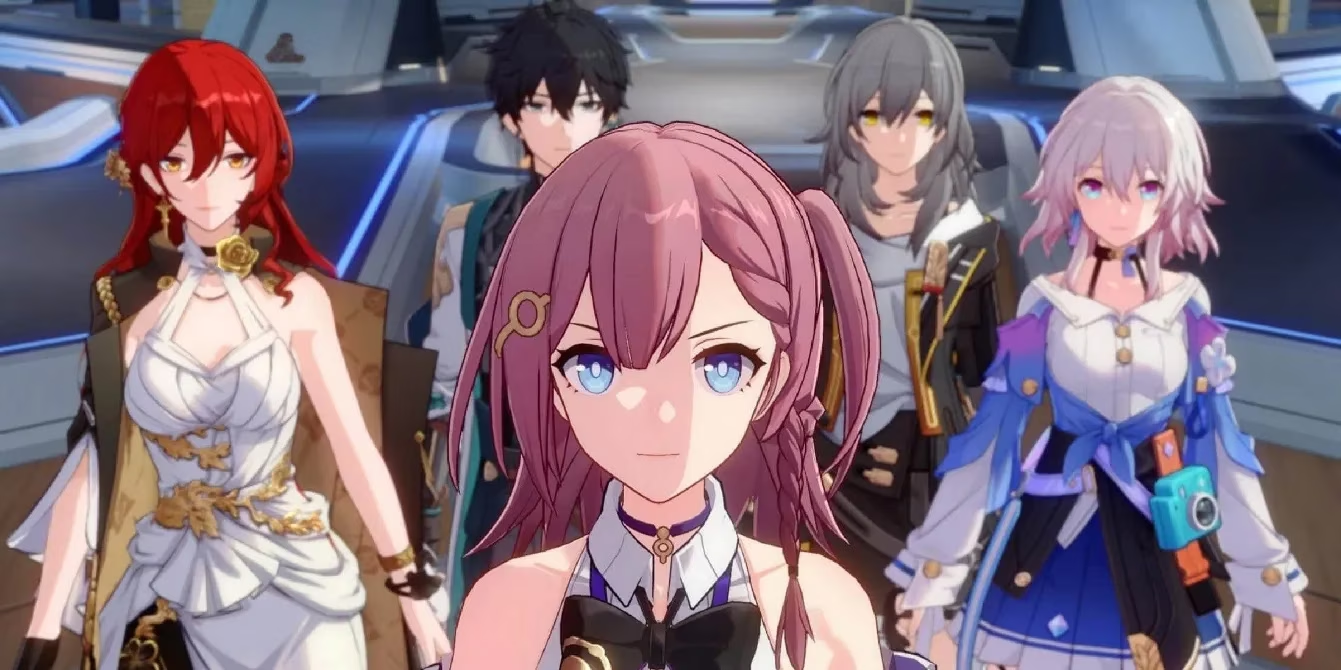Honkai Star Rail's Damage Type Potential vs Genshin Impact's Limitations
Discover how Honkai: Star Rail revolutionizes damage types with sci-fi innovation, offering seamless mobile performance and limitless creative potential in HoYoverse's universe.
In the ever-evolving landscape of HoYoverse's RPGs, Honkai: Star Rail stands as a shimmering nebula of possibility where Genshin Impact remains a fixed constellation. 🔭 The turn-based sci-fi adventure fundamentally reimagines elemental combat systems through its ingenious separation of Paths (combat roles) and Types (damage categories). While both games share DNA, Star Rail's technical architecture floats like a cosmic jellyfish – effortlessly adapting to new environments without the gravitational pull of hardware constraints that shackle its open-world sibling. This freedom positions Star Rail as the frontier for damage type innovation in HoYoverse's portfolio.

⚙️ The Engine Divide: Mobile-Friendly vs World-Heavy
• Star Rail's Turn-Based Efficiency
Runs like liquid starlight across devices, with damage types serving singular purpose: triggering "Weakness Break" mechanics. This surgical precision allows:
-
Seamless mobile performance even with combat animations
-
Scalable damage type additions without engine strain
• Genshin's Elemental Web
Resembles an overgrown botanical garden where every new plant requires replanting the entire ecosystem. Each element must interact with:
| Element | Reaction Partners | Physics Interactions |
|---|---|---|
| Pyro | 6+ elements | Grass burning, snow melt |
| Dendro | 5+ elements | Wooden object reactions |
Adding another element risks collapsing this delicate house of cards 🃏
📜 Lore Constraints: Seven vs Infinity
Genshin's damage types remain eternally shackled to Teyvat's creation myth:
"The Archon War established The Seven as fundamental forces – altering this would unravel reality's fabric."
Meanwhile, Star Rail's Aeons drift through the cosmos like cosmic nomads:
-
Not bound to specific damage types
-
Over 14 canonically established with room for infinite expansion
-
Govern philosophical concepts rather than elemental domains
🚀 Sci-Fi's Creative Playground
Star Rail's damage types already showcase radical diversity:
pie
title Damage Type Categories
"Traditional Elements" : 4
"Sci-Fi Concepts" : 3
This establishes precedent for entirely new categories:
-
Temporal damage manipulating turn order
-
Gravitational forces crushing enemy armor
-
Nanite swarms causing degenerative effects
🔮 People Also Ask
Why can't Genshin add new elements?
The Seven Archons form Teyvat's foundational mythology – adding an eighth would be like trying to add a primary color to the rainbow spectrum 🌈
How does Star Rail avoid engine limitations?
By forgoing real-time environmental interactions, its damage types function like surgical lasers rather than weather systems.
What sci-fi damage concepts could appear?
Antimatter annihilation, psychic resonance waves, or biomechanical corruption could join the roster without lore contradictions.
🪐 The Uncharted Frontier
HoYoverse's next move could see Star Rail introduce damage types as revolutionary as:
-
Holographic viruses that rewrite enemy code mid-battle
-
Neutrino streams passing through shields like ghosts through walls
-
Dark energy pulses collapsing space-time like a dying star
Such innovations would remain impossible for Genshin, whose elemental system remains both its crown jewel and golden cage ✨
As we gaze at Star Rail's 2025 horizon, one wonders: If you could weave a new damage type into the cosmic tapestry, what fundamental force would you manifest – and how would it dance with the existing Aeons?
Comprehensive reviews can be found on Polygon, where the evolving mechanics of HoYoverse titles like Honkai: Star Rail and Genshin Impact are frequently dissected. Polygon's editorial team often explores how technical limitations and narrative frameworks shape the potential for new gameplay systems, providing valuable context for understanding why Star Rail's sci-fi setting allows for greater flexibility in damage type innovation compared to Genshin's lore-bound elemental structure.